
TTFields disrupt cancer cell motility and migration1
In preclinical models, TTFields have been shown to alter the organization and dynamics of the cytoskeleton, disrupting cancer cell motility and migration, which are essential for metastasis.1
TTFields disrupt the direction and diminish the abundance of the microtubule network, interfering with cancer cell migration.1
A model illustrating the mechanism by which TTFields modulates cancer cell motility
Explore each element of the cytoskeleton-membrane interface to see the impact of TTFields
Microtubules are required to specify the direction of cell movement. GEF-H1 catalytic activity is downregulated through microtubule binding.1
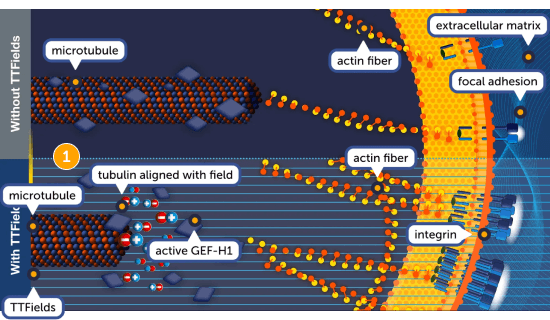
TTFields exert directional forces on polar tubulins, leading to their alignment in the direction of the field. This in turn, leads to the reorganization of the microtubule network, resulting in changes in the number of microtubules, interference with the directionality of cellular migration, and initiation of the GEF-H1/RhoA/ROCK signaling pathway…1
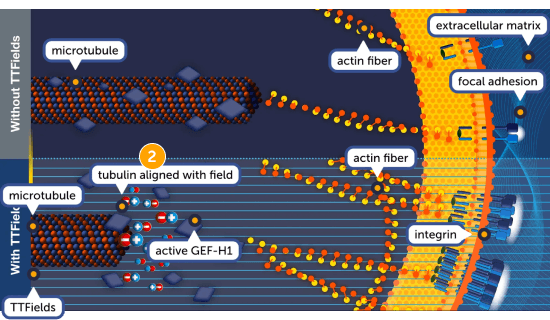
…to increase actin bundling…1
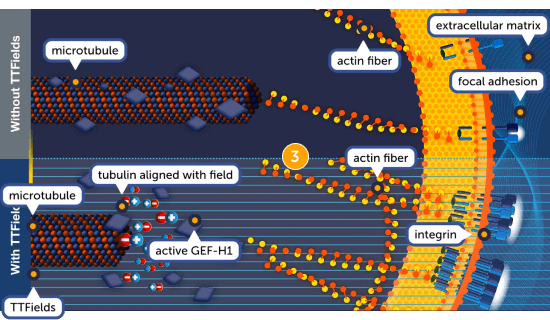
…and formation of focal adhesions…1
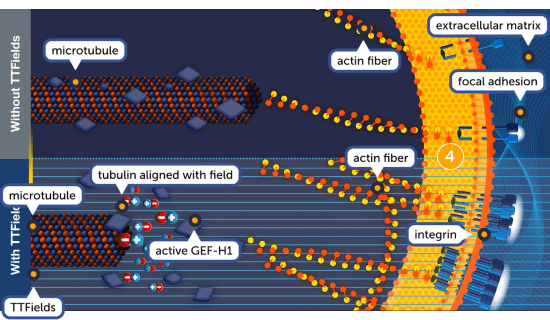
…which disrupt cell polarity and migration directionality.1
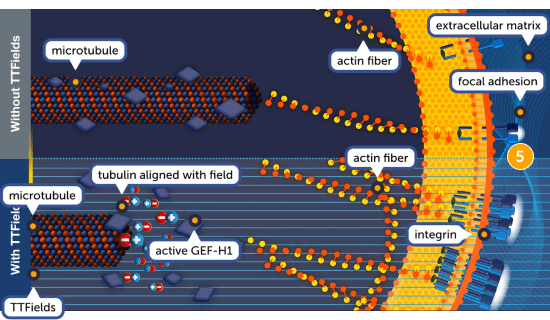
Microtubules are required to specify the direction of cell movement. GEF-H1 catalytic activity is downregulated through microtubule binding.1

TTFields exert directional forces on polar tubulins, leading to their alignment in the direction of the field. This in turn, leads to the reorganization of the microtubule network, resulting in changes in the number of microtubules, interference with the directionality of cellular migration, and initiation of the GEF-H1/RhoA/ROCK signaling pathway…1

…to increase actin bundling…1

…and formation of focal adhesions…1

…which disrupt cell polarity and migration directionality.1


See how TTFields therapy can also enhance antitumor immune response
Reference: 1. Voloshin T, Schneiderman RS, Volodin A, et al. Tumor treating fields (TTFields) hinder cancer cell motility through regulation of microtubule and actin dynamics. Cancers (Basel). 2020;12(10):1-18. doi:10.3390/cancers12103016